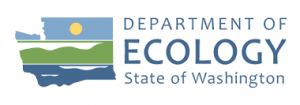WA DOE Adopts EPA’s Generator Improvement Rules
 Moving at a snail’s pace!
Moving at a snail’s pace!
Here are some of the more interesting changes:
Episodic Waste Generation (WAC 173-303-173): This allows a Washington MQG (Medium Quantity Generator) or Washington SQG (Small Quantity Generator) to exceed the calendar month quantity exclusion limits without having their generator status change to a larger generator. There are lots of caveats though. For instance, the generator is only allowed one episodic event per year and they must notify the DOE (Department of Ecology) at least 30 days prior to a planned episodic event (like a facility clean out). If the event is unplanned (like a natural disaster) they must notify the DOE within 72 hours of the unplanned event. Additionally, the containers of waste generated due to the episodic event must be labeled with “Episodic Hazardous Waste” or “Episodic Dangerous Waste” along with the typically required hazardous properties of the waste and the start date. By the way, the lettering on containers greater than one gallon in size must be visible from a distance of 25 feet, or be at least one half inch in height. Lastly, the waste from an episodic event at a SQG must be shipped offsite within 60 days from the start of the episodic event, and from a MQG the waste must be treated or shipped offsite within 60 days from the start of the episodic event.
Be sure to understand all the specific requirements for the episodic generation which can be found in WAC 173-303-173.
Satellite Accumulation for MQG & LQG (WAC 173-303-174): One of the interesting changes here is the size requirement for the container marking. Containers of waste must be marked with “Hazardous Waste” or “Dangerous Waste” along with the typically required hazardous properties of the waste and the start date. Okay, so far nothing new here. So, what’s so interesting? The size requirement for lettering on containers greater than one gallon in size is new. The lettering must be visible from a distance of 25 feet, or be at least one half inch in height.
Solvent-Contaminated Wipe Exclusion (WAC 173-303-071): Good News and Bad News! Washington DOE adopted part of the exclusion. So, what part is that? Washington adopted the part of the exclusion for wipes contaminated with certain solvents to not be considered dangerous waste…as long as they are disposed of at a properly permitted dangerous waste landfill or properly permitted dangerous waste combustor, boiler or industrial furnace. Okay, something is better than nothing right? What about solvent-contaminated wipes that will be laundered and re-used? These wipes will not be solid waste if properly collected and cleaned as per the regulations.
Marking and Labeling of Containers (WAC 173-303-630): Can you see me now? Interesting change here is that the marks or labels on containers of hazardous/dangerous waste must be visible from 25 feet or the lettering must be at least one half inch in height…but this is only for containers greater than one gallon in size.
Your Sales Representative and/or Customer Service Representative are available to answer your questions. Please feel free to contact us at 760-745-8780 or email to customerservice@pureingenium.com.
-Scott Rendleman, CHMM